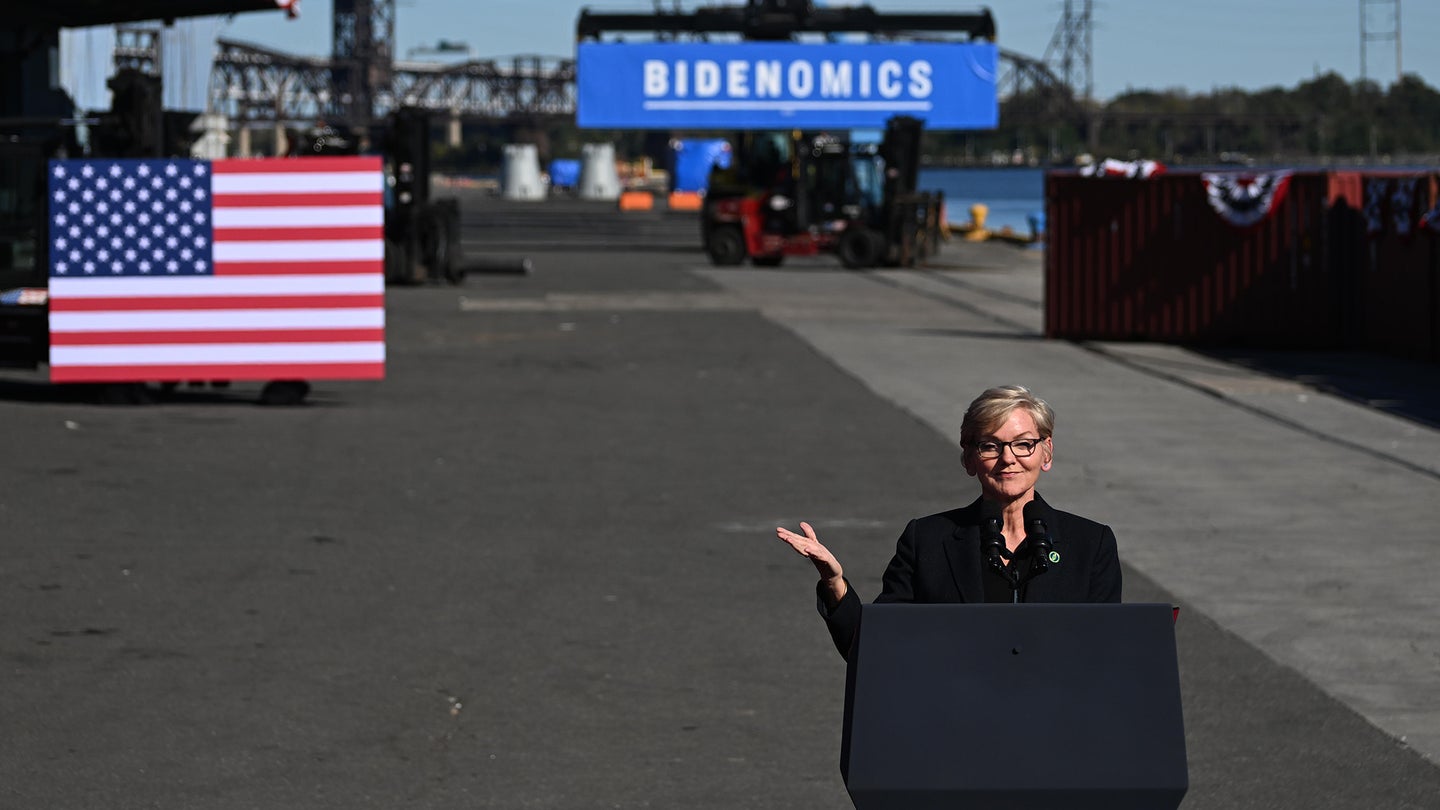US will build seven regional ‘hydrogen hubs’ to spark clean energy transition
The hubs will be spread across 16 states and aim to eliminate 25 million metric tons of carbon dioxide emissions.

On October 13, President Joe Biden and Energy Secretary Jennifer Granholm announced plans to develop seven regional clean hydrogen hubs across the US. The hubs will receive $7 billion in funding from the Bipartisan Infrastructure Law to accelerate the domestic market for low-cost, clean hydrogen.
These new hubs aim to produce more than three million metric tons of clean hydrogen annually. They are estimated to help eliminate 25 million metric tons of carbon dioxide emissions, or roughly the combined annual emissions of over 5.5 million gasoline-powered cars.
According to the White House, advancing clean hydrogen is essential to achieving President Biden’s “vision of a strong clean energy economy that strengthens energy security, bolsters domestic manufacturing, creates healthier communities, and delivers new jobs and economic opportunities across the nation.”
Why hydrogen?
Hydrogen is the simplest and most abundant element on Earth. However, it rarely exists on its own in nature and instead is usually found in compound form like in water (H20). Elemental hydrogen is also an energy carrier, meaning it can transport energy in a usable form from one place to another. However, hydrogen must be produced from another substance in order to do this.
Hydrogen fuel is made by separating water molecules, sometimes using a device called an electrolyzer. Fuel from hydrogen can also be produced from natural gas during a process called steam methane reforming that combines methane with steam.
While a clean fuel itself, the current processes used to make it is anything but clean. Large quantities of fossil fuels are used, which emit greenhouse gasses like carbon dioxide and methane. Energy companies are working to advance cleaner versions of making emission-free hydrogen fuel and California, Texas, and Colorado are already working to become clean hydrogen centers.
[Related: This liquid hydrogen-powered plane successfully completed its first test flights.]
These newly announced hubs will be focused on the goal of reducing the carbon dioxide emissions from hydrogen production. This huge undertaking will require large amounts of renewable energy to power the manufacturing process. It could also require additional nuclear power and a large network of carbon storage facilities that will grab and bury emissions in the regions where natural gas is still used to make hydrogen.
Cleanly manufacturing hydrogen could help decarbonize multiple industries in the US, as hydrogen is used to make fertilizer and is important in the chemical and petrochemical industry.
“This has potential to be transformative,” Oleksiy Tatarenko, who focuses on hydrogen at RMI, a clean energy advocacy group, told The Washington Post. “But we need to get it right from day one. We need to ensure this hydrogen can demonstrate climate benefits.”
How long will this take?
Granholm tells PopSci that the initiative provides the US with the opportunity for, “creating an entirely new economy around hydrogen and putting thousands and thousands of people to work, particularly people who have powered our nation for the last century.”
The hubs will be an asset in bringing hydrogen production up to scale, to reduce the currently high costs of hydrogen production. It also incorporates multiple industries from construction to operations to design.
“For the seven hydrogen hubs, it’s about a one-to six-investment, meaning for every dollar the federal government puts in, six dollars come from the private sector, so it’s government enabled, but private sector led,” says Granholm. “These projects are not just one year projects, these are projects that last several years to be able to plan and design, build, and operate.”
Where will the ‘hydrogen hubs’ be located?
The seven new hydrogen hubs will stretch across 16 states and are organized by geographic region.
“These states that were selected are not awardees yet. There’s a negotiation period that will occur between selection and award. So there is a period of time there for states to make sure that they’ve got an environment that will make these hubs of success, “ explains Granholm.
[Related: A beginner’s guide to the ‘hydrogen rainbow.’]
The Mid-Atlantic hub in Pennsylvania, Delaware, and New Jersey will repurpose old oil infrastructure and use renewable and nuclear electricity from both established and innovative electrolyzer technologies.
The Appalachian hub will be located across West Virginia, Southeastern Ohio, and Southwestern Pennsylvania. This hub is slated to be among the largest in terms of production and will use the region’s methane gas to derive hydrogen.
The California hub will span the entire Golden State and encompass the busy ports Long Beach, Los Angeles, and Oakland to produce hydrogen exclusively from renewable energy and biomass.
A Gulf Coast hub will be based in Houston, Texas, and could potentially expand into Louisiana. Houston is the traditional energy capital of the US and the plans for this hub include large-scale hydrogen production through both natural gas with carbon capture and renewables-powered electrolysis.
The Heartland Hydrogen hub spanning Minnesota, North Dakota, and South Dakota will use wind energy to derive hydrogen in an effort to decarbonize the region’s critical agricultural sector.
The Midwest hub in Illinois, Indiana, Michigan will further decarbonize industrial sectors by using hydrogen in steel and glass production, power generation, refining, heavy-duty transportation, and sustainable aviation fuel.
The Pacific Northwest hub in parts of Eastern Washington State, Oregon, and parts of Montana plans to produce clean hydrogen exclusively from renewable sources.
“The hub design in itself is important because it creates clusters of supply and demand that are close to one another, minimizing the need to tackle challenges that would come with moving hydrogen long distances,” Adria Wilson, the hydrogen policy lead at Breakthrough Energy, told CNBC.
